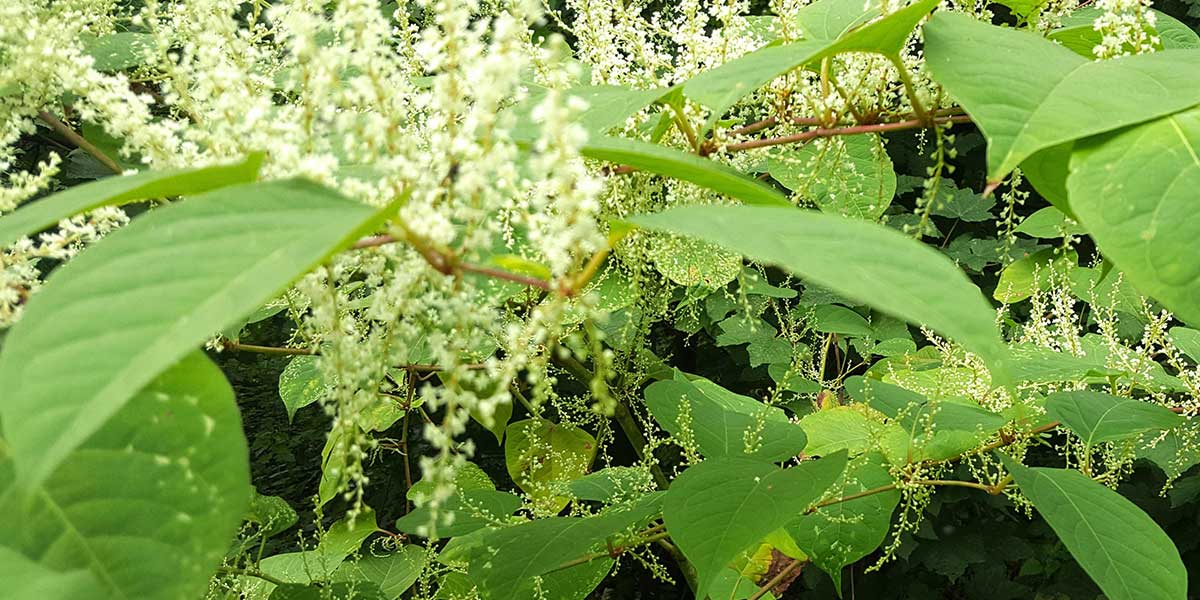How to Identify Japanese Knotweed: A Comprehensive Guide
Japanese Knotweed is a highly invasive plant that poses significant challenges for property owners and developers across the UK. Known for its rapid growth and resilience, it can cause extensive damage to buildings, roads, and gardens if not managed properly. At Devon and Somerset Knotweed, we specialise in professional knotweed removal services, offering effective knotweed control and comprehensive knotweed removal in Devon. This guide will help you identify Japanese Knotweed, understand its characteristics, and highlight the importance of seeking expert assistance for its removal.
The Importance of Identifying Japanese Knotweed
Accurate identification of Japanese Knotweed is the first crucial step in addressing the problem. Misidentifying this plant can lead to ineffective treatments and further spread, exacerbating the issue. Early detection and intervention are key to successful knotweed control. At Devon and Somerset Knotweed, our professional knotweed removal services are designed to tackle this invasive plant efficiently, ensuring long-term results and peace of mind for property owners.

Physical Characteristics of Japanese Knotweed
Japanese Knotweed has several distinctive features that make it identifiable throughout the year. Recognising these characteristics can help you take prompt action if you find this plant on your property.
- Leaves: The leaves of Japanese Knotweed are heart-shaped or spade-shaped with a pointed tip. They are arranged alternately along the stem, giving the plant a distinctive zigzag pattern. The leaves can grow up to 14 cm long and 10 cm wide.
- Stems: The stems resemble bamboo, with a hollow structure and distinctive nodes. They are usually green with purple speckles and can grow up to 3 metres tall. The stems are tough and woody, particularly at the base.
- Flowers: During late summer and early autumn, Japanese Knotweed produces small, creamy-white flowers that grow in clusters. These flowers can help in distinguishing the plant during the blooming season.
- Rhizomes: The underground rhizomes are a key feature of Japanese Knotweed. They are thick, woody, and can extend several metres horizontally and up to 3 metres deep. Rhizomes are orange or yellow inside and can produce new shoots, making eradication challenging without professional help.
Seasonal Changes in Appearance
Japanese Knotweed undergoes noticeable changes throughout the year, which can aid in its identification.
- Spring: New shoots emerge with red or purple tinges, quickly growing into thick, bamboo-like stems.
- Summer: The plant reaches its full height, with dense clusters of leaves and distinctive zigzag stems.
- Autumn: Clusters of small, creamy-white flowers bloom, making identification easier.
- Winter: The plant dies back, leaving behind dead, brown canes that persist through the colder months.
Common Habitats of Japanese Knotweed
Japanese Knotweed thrives in a variety of environments, making it a widespread problem. Common habitats include:
- Urban Areas: It often grows in disturbed soils, such as those found in construction sites and along roadsides.
- Riverbanks: The plant is frequently found along riverbanks, where it can exacerbate erosion problems.
- Gardens and Allotments: It can invade gardens and allotments, outcompeting native plants and causing significant damage.

Identification Tools and Techniques
For accurate identification, several tools and techniques can be employed:
- Visual Inspection: Regularly inspect your property for the characteristic features of Japanese Knotweed.
- Photographic Guides: Use photographic guides and online resources to compare suspected plants with verified images of Japanese Knotweed.
- Professional Surveys: Engage a professional service like Devon and Somerset Knotweed for a thorough survey and confirmation.
Mistaken Identity: Plants Commonly Confused with Japanese Knotweed
Several plants are often mistaken for Japanese Knotweed. Knowing how to differentiate them is crucial:
- Bamboo: While similar in appearance, bamboo has solid stems and does not die back in winter.
- Russian Vine: This plant has similar leaves but grows as a vine and lacks the characteristic zigzag stem pattern.
- Bindweed: Bindweed has similar heart-shaped leaves but grows as a climber and produces trumpet-shaped flowers.
Next Steps After Identification
If you identify Japanese Knotweed on your property, it is essential to take immediate action:
- Do Not Disturb: Avoid cutting, mowing, or attempting to remove the plant yourself, as this can cause further spread.
- Contact Professionals: Reach out to experts like Devon and Somerset Knotweed for a comprehensive survey and professional removal plan.
- Document the Infestation: Take photographs and keep records of the infestation to assist in developing an effective treatment strategy.
Professional Knotweed Removal Services from Devon and Somerset Knotweed
At Devon and Somerset Knotweed, we offer a range of professional services to help you manage and eradicate Japanese Knotweed effectively:
- Identification Service: Accurate identification is the first step in our comprehensive approach. Our experts conduct thorough surveys to confirm the presence of Japanese Knotweed and assess the extent of the infestation.
- Supply of Reports for Mortgage Applications: We provide detailed reports required by mortgage lenders, ensuring smooth property transactions and compliance with legal requirements.
- Effective Treatment Programmes: Our bespoke treatment plans are tailored to your property’s specific needs. We use safe and environmentally friendly methods to eliminate Japanese Knotweed and prevent regrowth.
- 5-Year Follow-Up Service: To ensure complete eradication, we offer a 5-year follow-up service with regular inspections and necessary treatments to maintain a knotweed-free environment.
- 10-Year Insurance-Backed Guarantee: Our treatments come with a 10-year insurance-backed guarantee, providing long-term protection and peace of mind.
Professional Knotweed Control Removal Services
Identifying Japanese Knotweed accurately is essential for effective control and prevention of further spread. At Devon and Somerset Knotweed, we are committed to providing top-tier professional knotweed removal services. By recognising the distinctive features of Japanese Knotweed and understanding the importance of professional intervention, you can protect your property and ensure its long-term value. Contact us today for expert assistance in knotweed control and knotweed removal in Devon. Let us help you reclaim your space from this invasive plant and secure your property for the future.




